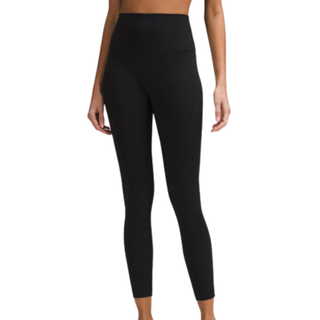If you’ve been looking at all the different types of Pilates and feeling a little overwhelmed, you’re not alone. There are over 70,000 Google searches for Pilates every month in the UK alone, and many more searches for explainers about what some of the key Pilates trends – like Reformer Pilates – are.
If you’re wondering why there’s all the hype, let us explain a bit about Pilates workouts and further, the many benefits of Pilates. The practice was designed by Joseph Pilates who used strengthening and stretching exercises to rehabilitate soldiers during the First World War. Since then, it’s been used to support injury rehab, general strength and mobility for all sorts of people.
Studies support its benefits: a 2022 Applied Science systematic review found that Pilates can lead to a notable increase in muscle mass in the trunk and abdomen. There was also an increase in the bone density of the lumbar spine, which researchers said was important given Pilates’ accessibility for menopausal and sedentary women who are at risk of osteoporosis.
And these benefits and more can be seen across multiple types of Pilates. For example, a 2020 paper found that eight weeks of Reformer Pilates had positive effects on flexibility, heart rate and glucose measurements in women.
So if you’re scrolling your class booking app and wondering which type of Pilates to go for – Classical or Stott? Tower Pilates or Reformer? – know that all of them pack benefits. But if you want to get specific with your training to meet your goals, then picking the correct Pilates moves could do wonders. Keen to read more about Pilates while you’re here? Don’t miss our guides to the best Pilates exercises for beginners and core Pilates exercises, as well as the most effective Pilates workouts at home and trainer-approved 20 minute Pilates workouts to do any time, any place. Keen to invest in some kit to level up your workouts? Shop our tried and tested edits of the best at-home Reformer Pilates machines and more budget friendly Pilates sculpt bars, Pilates sliders and Pilates rings, now.
A definitive list of the different types of Pilates, plus which is best for you
1. Mat Pilates
What? No prizes for guessing how mat Pilates is done: on a mat. What that means is that there are no fancy beds, frames or other machinery used. Mat Pilates is mainly bodyweight focused but other equipment such as Pilates rings and balls can be used too.
Why? “Mat Pilates focuses on core strength, flexibility and overall body conditioning through controlled, low-impact exercises,” explains Annabel Luke, Pilates instructor and founder of Pilates By Bel. Mat Pilates is also very accessible: there are tonnes of YouTube videos out there for you to practise from home and classes in studios are much cheaper than any of the kit-based Pilates classes, like Reformer and Tower Pilates. Using mainly bodyweight to build strength and mobility is also a great way to create a mind-to-muscle connection without distraction.
Who is it best for? “It’s a great starting point for anyone new to Pilates, as well as those with limited access to equipment,” explains Luke. “I would suggest it’s avoided by those with severe back or neck issues. Without the support of equipment, some exercises might exacerbate these conditions.”
2. Reformer Pilates
What? “Reformer Pilates is performed on a machine called a Reformer, which has springs, pulleys and a sliding carriage,” shares Luke. Arguably the most trendy of all types of Pilates, it uses the springs of the bed to provide resistance to the carriage and pulleys.
Why? You can load up a Reformer bed with plenty of weight to increase the strength training benefits from your Pilates workout. “Reformer Pilates is also often recommended for those rehabilitating from some injuries, as the machine provides additional support for the body in certain exercises and stretches,” says Luke.
Who is it for? Anyone looking for extra burn or intensity in their Pilates workouts. As the expert details, anyone from newbies through to pros can enjoy Reformer, however, those with some experience in mat Pilates initially will benefit most. “I wouldn’t recommend complete beginners try generic Reformer but opt for a beginner’s class – and while it can be supportive, those with injuries should also proceed with caution and always inform their instructor,” says Luke. Keen to invest in your own at-home Reformer Pilates machine? Shop our guide here.
3. Tower Pilates
What? The new kid on the block in terms of trendiness, Tower Pilates involves using a wall unit – called a tower – which is equipped with springs, bars and straps. Imagine it like a Reformer machine but rather than the springs and handles being beneath you, they’re perpendicular.
Why? “This equipment adds resistance and support to traditional Pilates exercises, offering a full body workout,” says Luke. It can also add stability and alignment benefits for improved posture.
Who is it for? “Anyone looking for additional variety in their Pilates workouts, as well as those wanting to level up their strength training with added resistance, would benefit from Tower Pilates,” says Luke. “As with Reformer, I wouldn’t recommend it for complete beginners to Pilates, unless it is specified as a beginner’s class, and for those with injuries to proceed with caution.”
4. Classical Pilates
What? “Classic Pilates refers to the original exercises developed by Joseph Pilates,” says Luke. There are 34 of these moves, most of which you’ll likely recognise from mat, Reformer and other modern styles of Pilates, such as the hundred, leg circles and rolling like a ball. “The movements are typically performed on a mat or use apparatus like the Reformer, Cadillac and Wunda Chair,” adds Luke.
Why? Pilates – which was first called Contrology – was developed as a form of rehabilitation designed to strengthen the body via the core. It was also built around the concept of “whole-body health”, encompassing mind, body and spirit, which is why it involves breathwork and mind-to-body connection.
Who is it for? “Traditional Pilates-goers who prefer to practice Pilates in its most original form,” says Luke. But it isn’t just for purists: Pilates can be great for anyone recovering from injury or looking to start a movement practice for the first time or develop a better connection with how they move.
5. Contemporary Pilates
What? “Contemporary Pilates blends classical Pilates principles with modern knowledge of biomechanics and physical therapy,” explains Luke. “It often includes creative and dynamic modifications, variations and integration of equipment not used by Pilates himself, such as ankle or wrist weights and resistance bands, for extra benefits.”
Why? Classical Pilates is renowned for being an impressive way to rehabilitate and strengthen the body. But, applying the principle of progressive overload (which means that in order to keep building strength we need to keep increasing the intensity of our workouts) it’s clear that 34 movements may not be enough for lifelong strengthening. That’s where the extra challenges and dynamism of contemporary Pilates can help.
Who is it for? “Everyone,” says Luke. “There are options for beginners to advanced practitioners and it can be tailored to meet various needs, from rehab to athletic performance.”
6. Pilates HIIT
What? “Pilates HIIT (short for High-Intensity Interval Training) combines the principles of Pilates with short bursts of intense cardiovascular exercise,” explains Luke. Typically found in modern studios, it might make typical Pilates exercises more fast-paced or mix up holistic movements with cardio moves.
Why? “Pilates HIIT is designed to increase your heart rate, improve cardiovascular fitness and up energy expenditure while maintaining the core focus of Pilates,” says Luke. By combining these disciplines, you’ll be working on 360 degrees of fitness: strength, mobility and cardio.
Who is it for: “I’d recommend it for fitness enthusiasts who are looking for a more intense workout,” says Luke. Beginners to all types of training might find the high-intensity aspect too challenging, and beginners to Pilates should take a lower-impact class in order to learn how to complete the moves before upping the pace and intensity.
7. Stott Pilates
What? Stott Pilates is a contemporary form of Pilates developed by Lindsay Merrithew and Moira Merrithew with a focus on exercise science, fascial fitness and spinal rehabilitation. It focuses on five principles: breathing, pelvic, shoulder and neck alignment, and rib cage placement.
Why? “Stott Pilates emphasises maintaining the natural curves of the spine, incorporating modern biomechanics and rehabilitative techniques to improve alignment and reduce pains,” says Luke. If avoiding pain and improving your day-to-day movement patterns is the goal, Stott is a winner.
Who is it for? “With its wide range of exercises and modifications, it’s accessible to beginner through to pro practitioners alike, and in particular, those who prefer a modern approach to Pilates. It’s also often used in physical therapy due to its focus on alignment and biomechanics,” says Luke.
@julles.life
♬ original sound – GsC
So, which type of Pilates is best for me?
Bottom line? This will depend on what your current fitness level is like, what access you have to studios or classes, and what your end goal is. That said, that’s the beauty of Pilates and the many different principles – there’s something for everyone.
Shop MC UK approved Pilates kit now:
Bend This One-Shoulder Bra
Senior Health Editor Ally Head has this lululemon one shoulder bra and regularly raves about the support it offers despite only having one strap – plus, it’s breathable, sweat wicking, and super soft.








